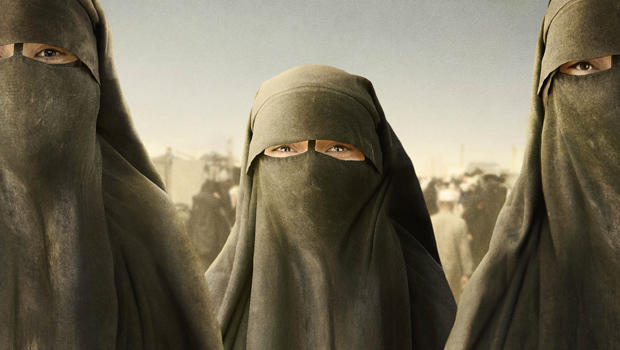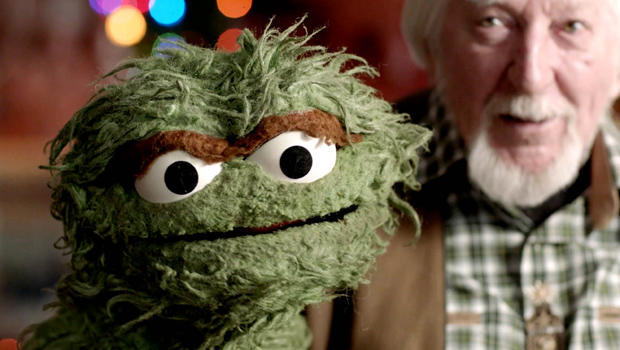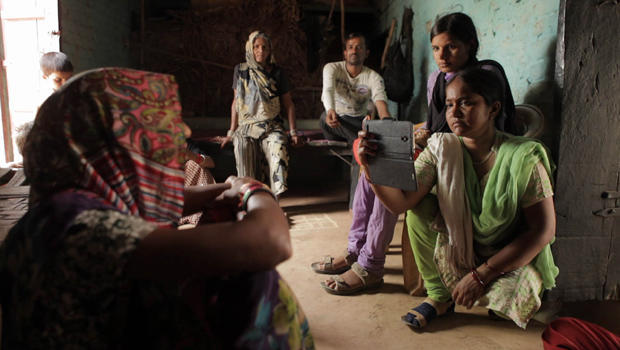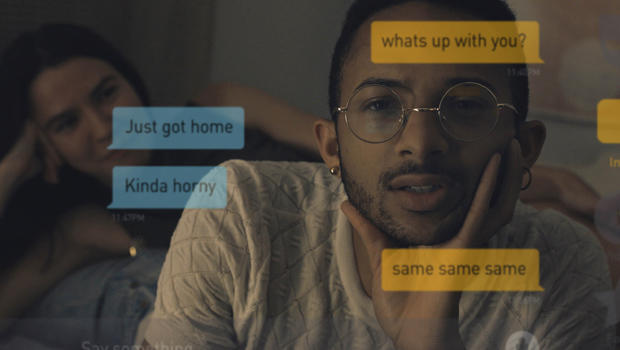2021 Sundance Film Festival: Day 3 highlights
Saturday at the virtual 2021 Sundance Film Festival brought more insightful documentaries and dramas. The festival runs through February 3.
Highlights for Day 3:
Though Jamila Wignot's rapturous profile of dancer and choreographer Alvin Ailey (1931-1989) spends less time on details of his life than may be wished for, it more than makes up for it on details of Ailey's work, including archival footage of Ailey as a dancer and choreographer; stunning performances of such pieces as his quintessential "Revelations"; and energetic rehearsals of the Alvin Ailey American Dance Theater, led by mentees who are pursuing Ailey's vision years after his death.
It also features interviews with numerous dancers and collaborators who were part of the revolutionary dance company, who speak to Ailey's gifts as a leader, and as an artist who found a way to blend the aesthetics of classical and modern dance with the sensibility of a young Black boy from Depression-era Texas who dreamed of becoming a dancer, and made it to the heights of the performing arts.
Next showing is on Feb. 1 at 10:00 a.m. ET/8:00 a.m. MT.
Danger permeates the screen in this story of activists' attempts to rescue women who have been trafficked to be used as sex slaves (sabaya) by members of ISIS. Despite the collapse of the Islamic State of Iraq and the Levant, many women and children Yazidis who have been taken are being held in the Al-Hol refugee camp, near the Syria-Iraq border, where Syrian security forces outside can't guarantee safe transit into and out of its perimeter.
Filmmaker Hogir Hirori follows volunteers from the Yazidi Home Center as they track down victims, infiltrate the camp under cover, and remove them from captivity (if they can be found), and uses the camera most effectively to pull us inside the labyrinth of the refugee camp. And even if under cover of darkness the women are exfiltrated, they still must face a transition away from sex slavery, or face the discrimination that would come from families for having had children by jihadists or for potentially becoming radicalized.
Next showing is on Feb. 1 at 10:00 a.m. ET/8:00 a.m. MT.
"Street Gang: How We Got to Sesame Street"
If television in the 1960s was a vast wasteland, the world of children's television was even wastier, which prompted an experiment to produce something hitherto unseen: quality educational programming for kids ages 3-5 that used the style of commercial TV advertising to teach basics like numbers and the alphabet. "Street Gang" brings us back to the birth of the series "Sesame Street," and shows how a collection of educators and psychologists, puppeteers, songwriters, comedy writers, and a savvy production team created a public television landmark.
Experimentation was key: Nothing quite like it had been done before. And so, given the freedom to try just about anything, the people of "Sesame Street" did just that, carefully studying the responses of children to better understand what worked and what didn't.
It was not without controversy (the inclusion of Black characters and ethnically diverse children led a board of White broadcasters in Mississippi to ban the show), or tragedies (the death of the actor who placed the grocer, Mr. Hooper, prompted a teachable moment that was painful to share). Plus, not every puppet show gets sued for parodying Beatles songs. But the film celebrates the triumph of talent and perseverance that made "Sesame Street" rise above what TV for children, sadly, often is: unpalatable and boring. It also helps correct the record in giving credit to the original series director, Jon Stone, who had to juggle actors, kids, Muppets, cartoons and songs into a show that would go on to entertain and instruct both children and adults for more than 50 years.
Next showing is on Feb. 1 at 10:00 a.m. ET/8:00 a.m. MT.
Writer-director Lyle Mitchell Corbine Jr.'s contemplative drama, which touches on themes of assimilation by indigenous people, traces the long-lasting effects of a murder decades earlier, and the pain of festering emotional wounds.
We are first introduced to Makwa, an Anishinaabe boy and victim of domestic abuse, who feels ostracized at school. Following the murder of a classmate, he and a friend, Teddo, cover up the crime. But their shared secret comes back to haunt Makwa years later, when Teddo is released from prison and pays a visit.
Michael Greyeyes, as the adult Makwa (rechristened Michael), gives a quietly tense performance as a man deathly afraid of revealing himself, to risk the loss of everything in his life. Chaske Spencer brings an unadorned sadness and humility to the adult Teddo, who recognizes that the repercussions of one's acts can never truly be buried or erased.
Next showing is on Feb. 1 at 10:00 a.m. ET/8:00 a.m. MT.
In this lyrical black-and-white documentary of Ethiopian khat harvesters, filmmaker Jessica Beshir observes the quiet lives of men and women who are in some ways touched by the cultivation, sale or use of the stimulant plant.
It's a film whose ephemeral beauty – of smoke, steam and water – frames the seeming narcotic haze of young people dreaming of migrating to a better life, or of older people attached to memories and regrets. Notwithstanding the sight of laborers toiling, it's languorous and sensual.
Next showing is on Feb. 1 at 10:00 a.m. ET/8:00 a.m. MT.
Nearly two decades ago, the weekly publication Khabar Lahariya, in Uttar Pradesh, was founded by a women's rights organization as the first newspaper in India written and edited by women, covering issues such as gender and caste discrimination and sexual violence that were often ignored by the mainstream press.
In "Writing with Fire," filmmakers Rintu Thomas and Sushmit Ghosh follow the reporters of Khabar Lahariya as they transition from a print publication to a digital news service, complete with video reports on their increasingly popular YouTube channel. Having to acquire and hone new skills with new tools (not everyone had experience with smartphones), the women show their fearlessness in pursuing stories, shaming police for inaction, and challenging patriarchal assumptions about their careers. We also witness younger reporters come into their own, as the editors nurture new talent and encourage the women to push themselves out of their comfort zones. It's an acclamation not just of female power, but also of the power of journalism to tell the stories of the voiceless.
Next showing is on Feb. 1 at 10:00 a.m. ET/8:00 a.m. MT.
Filmmaker Pacho Velez wasn't going to suffer alone as he searched for a partner online, even with his mom riding shotgun while he checked out candidates. So, he enlisted interview subjects to scroll through dating sites, describing what they were looking for and how, in this era of COVID, their romantic lives have changed. Filming subjects swiping left or right from the POV of a computer screen (echoes of Errol Morris), Velez talks with people across the spectrum, from those who clearly haven't thought through what they want, to those with highly specific demands, to those throwing caution to the wind, to the jaded who have given up on certain requirements, to those really jaded ones looking for older men with high incomes who won't be in the same country very often.
Though visually static, the revolving cast of characters brings energy, desperation, loneliness, fear and humor both to their search and to the presentation of themselves when they have to craft some potent introductory message that might be the first step to a lifetime love … or not. As hopeful as they may be, though, the process of the online "meet market" is looked at askance ("This is so judgey," says one man as he swipes), with a modicum of resignation. "This whole thing is a pain in the ass," one sighs.
Next showing is on Feb. 1 at 10:00 a.m. ET/8:00 a.m. MT.
See also:
How to watch
While features will be streamed during selected blocks of time (and can only be viewed then), short film programs will be accessible throughout the festival, which culminates in an awards ceremony that will be streamed live on Tuesday, February 2. Winning films will be available to watch on demand the following day.
Offerings may be viewed via a web browser, streamed from your computer to your TV (via Chromecast, Airplay or Wi-Fi), or through an HDMI connection. You can also watch via the Sundance Film Festival TV app (available on AppleTV and iOS, FireTV and Android). Click here for technical instructions on getting set up.
In addition to streaming via Sundance's digital portal, films will be presented on satellite screens nationwide, including arthouse cinemas, museums and drive-ins. A complete list of venues may be found here.
- For online and in-person tickets go to tickets.festival.sundance.org.
- Check here for a program guide and film descriptions.
- Printable 2021 program guide (pdf )










